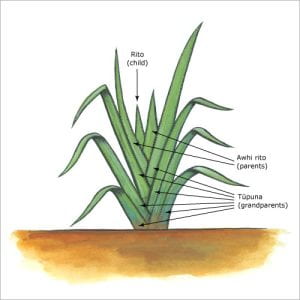
When harvesting, only harvest when you are calm and the weather is good, only take the tupuna rau and cut it on a diagonal angle so it doesn’t collect water and rot.
Recently, some people came over to Rawhiti school to teach us about the science in Harakeke and Ti Kouka. First, they introduced themselves before giving us some things made with Harakeke to pass around. There was a pair of pāraerae (sandals) and some shin guards. We then talked about innovation and how Māori were great innovations, using the resources at hand and continually improving things.
Next, they showed us how to extract muka (stringy fibres) before doing a strength test with a bunch of muka strings forming one big string, about 0.75 cm thick. It turned out it could hold up to 28 kgs! After that, we used a razor to shave little bits of harakeke of a big piece and put some on a microscope slide. We then observed them under the microscope and we could see the muka and other parts, we could even see the bundles of chloroplasts (the cells that make food for the plant using photosynthesis). Lastly, we were instructed to create solar panel using only glass, a few chemicals and some chloroplasts from a Harakeke plant. When we tested them for electricity, we could see it generating some when in the light!
I think this was a great experience to have had as I have definitely learnt a lot from my short time with them. Have you ever used a microscope? Answer in the comments below!
Thanks for reading,
Heath 🙂